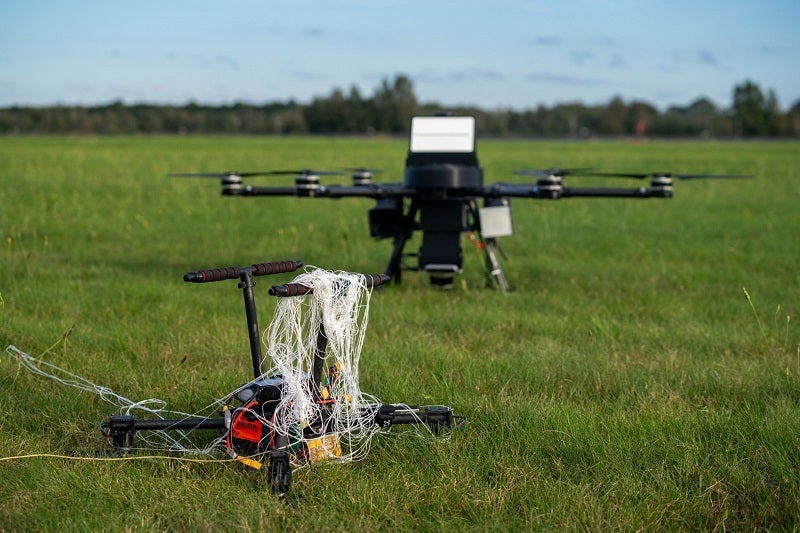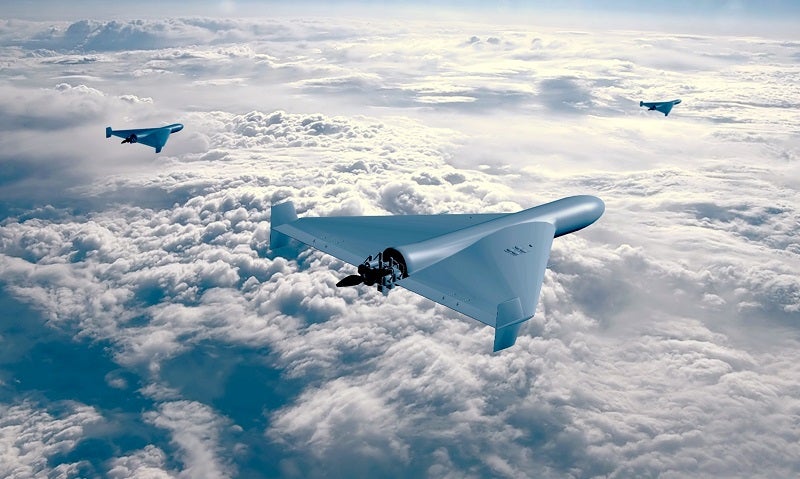
British industry will jostle to meet the government’s latest call for specific drone capabilities as part of an international effort to support Ukraine’s sustained use of uncrewed aerial systems (UAS) as part of the Drone Capability Coalition (DCC).
Namely, this involves cultivating a reliable Western-based supply chain for critical components and manufactured systems, ensuring the war-torn nation can outpace Russian industry and supplies.
In mid-September 2024, the Ministry of Defence (MoD) issued two invitations to tender (ITTs) – that is, a formal request for suppliers to submit a bid for the supply of UAS – under the auspices of the Coalition.
This is the first phase of British procurement activity for two types of drone: a Large First-Person View (FPV) system and an Operational Drone Interceptor.
Large FPV drone tender
The Large FPV Drone ITT aims to procure up to 15 batches of FPV drones, each batch will comprise 20 systems – 300 units in total – and potential associated options. Typically, FPV variants are guided by a user wearing a virtual reality headset, so bidders will need to account for supplementary equipment.
The contract value is said to be £2.25m ($2.9m). The closing date is 14 October, with production ongoing between 15 November and 31 December 2024.
Bidders will put forward a concept capable of carrying a payload weighing more than five kilogrammes, which will be tested by the DCC.
Following testing, the platforms that meet the requirements will be considered for a potential future production contract (up to ~500 drones per month).
Systems must be produced and dispatched for testing within four weeks of contract award. The government also expects that bidders will factor in a nominal cost for packaging and exportation of goods to Latvia, a co-lead in the DCC.
Drone interceptor tender
An Operational Drone Interceptor is also required, for which the closing date is 11 November. The MoD plan to procure up to five different batches of interceptors, consisting of two complete systems (five opposing UAS defeats per system) including all ground elements (e.g. two systems for two ground elements), which will be tested by the DCC.
After testing, successful platforms will be considered for a potential future production contract (~200 opposing UAS defeats per month).
The contracting period will take place a month after the Large FPV tender, between 13 December 2024 and 31 January 2025. The systems must be produced and dispatched for testing within 6 weeks of contract award.
A global sustainment programme
The Coalition began in earnest under the Sunak government on 15 February, when the MoD, together with Latvia, agreed to “scale up and streamline” the West’s provision of UAS for the collective benefit of Ukraine and themselves.
Since then, the structure of the DCC has expanded and membership has risen to include Australia, Canada, Denmark, Estonia, Germany, Lithuania, the Netherlands, Poland and Sweden. These global partners contribute through financially in a fund created by a memorandum of understanding during the Washington Nato summit in July that, at the time, reached €58m ($63.5m).
At home, the British government also introduced its first Drone Strategy at the end of February, backed by at least £4.5bn ($5.69bn) of investment over the next decade. “Our vision is for the UK to be world-leading in uncrewed defence systems,” the inaugural document stated.

Ukraine adapts with drones
Toward the end of 2023 until the spring of 2024, Ukraine was troubled by a lack of resources, largely due to political infighting over the allocation of funds in Washington, the combatant’s largest donor of military assistance.
In that time, Ukraine was forced to adapt to the situation by expanding capacity to manufacture cheaply made drones, particularly FPV variants.
“Such munitions are used to devastating effect in frontline combat,” noted GlobalData Defence Analyst James Marques in a March briefing, “often compensating for Ukraine’s near-constant shortfall in conventional artillery ammunition.”
A small army of dispersed volunteers, supported through online resources such as Telegram channels and even instructional courses on Zoom, produced drones from small and discreet warehouses, converted barns, cellars, or even their own living rooms.
The problem, of course, is getting your hands on cheap components which are mainly sourced from China. Crucially, in the commercial sector, Chinese manufacturers account for approximately 70% of the market according to a GlobalData report on ‘Drones in Aerospace and Defence’ (January 2024).
Taking advantage of the increasing demand for drones among militaries worldwide and the US’ legal restriction on foreign sales of armed drones under the Missile Technology Control Regime, China has successfully tapped into a fast-growing market.
Chinese drones are considerably less expensive than their US and Israeli counterparts and offer flexible payment options, enabling China to expand in countries with limited military budgets.
Use cases
This year, Russian drones, particularly the Iranian-made Shahed UAS, have been used as part of a salvo of strikes against Ukrainian targets, both military and civil.
More than 100 Shahed units were deployed as part of a combined missile salvo, which included Russian ‘hypersonic’ weapons besides conventional missiles, in the heaviest strikes against Ukraine in the war at the end of August.

These one-way-attack drones have wreaked indiscriminate havoc against Ukrainian infrastructure ahead of the winter period. Though, this tactic is not new as it was also used in the last two winters to sap Ukrainian morale.
For Ukraine, on the other hand, the use of drones are used against more costly Russian ground platforms. This remains a vital tactic in Eastern Ukraine, where its forces are currently entrenched in a bitter struggle to repel marginal Russian advances in the Donbas.
Moreover, the war has also been brought home to Russia since the Kursk incursion in August, wherein Ukraine now occupies some 900 square kilometres in this region inside Russia. However, the use of drones in this North-Eastern region of the theatre are also present, according to Nick Reynolds, a research fellow in land warfare, Royal United Services Institute.
No doubt this occupied territory will be used as a bargaining chip in prospective negotiations with Russia as part of Zelenskyy’s Victory Plan. For that reason, drone-and-jamming tactics will be useful in conserving the gains made.








